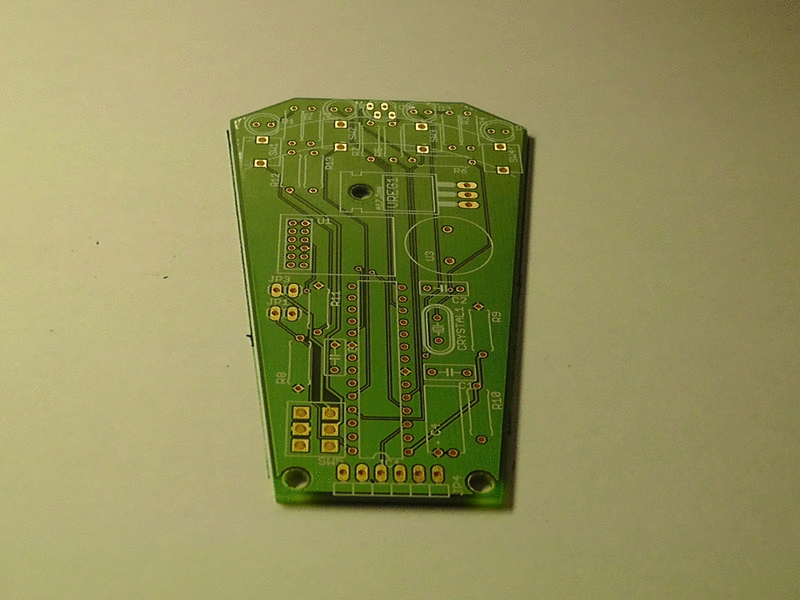HSC2011/Hardware: Unterschied zwischen den Versionen
Keine Bearbeitungszusammenfassung |
Chrysn (Diskussion | Beiträge) K fake subpages |
||
| Zeile 1: | Zeile 1: | ||
<small>< [[HSC2011]]</small> | |||
== Part list== | == Part list== | ||
{|border="1" cellpadding="5" cellspacing="0" style="text-align:left;" | {|border="1" cellpadding="5" cellspacing="0" style="text-align:left;" | ||
Version vom 1. Mai 2011, 20:38 Uhr
< HSC2011
Part list
| Partname | Amount | Position on PCB | Bauteilsortiment | known bugs |
|---|---|---|---|---|
| LED 5mm BLUE | 1 | D1 | - | |
| LED 5mm GREEN | 1 | D2 | G4 | |
| LED 5mm YELLOW | 1 | D3 | - | |
| LED 5mm RED | 1 | D4 | H4 | |
| Pushbutton | 4 | SW1, SW2, SW3, SW4 | E9 | |
| LF50CV | 1 | VREG1 | G6 | |
| Piezo beeper | 1 | U3 | S7 | |
| 2x16 Pol, RM 2.00 | 1 | U1 | C5 | needs 2x6 pin socket |
| RFM12B Radio module | 1 | U1 | K8 | |
| 28 PIN DIP Socket | 1 | IC4 | D9 | |
| ATMEGA328P | 1 | IC4 | - | |
| 10 uF Capacitor (elko) | 1 | C4 | E0 | |
| 22 pF Capacitor (ceramic) | 2 | C1, C2 | A2 | |
| 100 nF Capacitor (ceramic) | 1 | C3 | C2 | imprint unter loch |
| 16 Mhz Crystal | 1 | CRYSTAL1 | L0 | |
| 9V battery clip | 1 | JP3 | T3 | imprint should say +/- not J3 ;) |
| FTDI connector | 1 | JP4 | B6 | |
| Resistor 100 ohm | 1 | R10 | N1 | nicht bestücken! (R10) |
| Resistor 10K ohm | 1 | P9 | P3 | desc should be R9 not P9 |
| Resistor 1K ohm | 7 | R5, R6, R7, R11, R12, R13 | O2 | |
| Resistor 680 ohm | 4 | R1,R2,R3,R4 | ? | am plan noch als 1k eingezeichnet |
| Resistor 4K7 ohm | 1 | R8 | - | |
| RGB LED 5mm | 1 | D5 | - | |
| Switch MIYAMA MS 245 | 1 | SW5 | S9 | connect over cable! |
Build process documentation
Specification
Nodes are supposed to be equipped with:
- RF transceiver
- 4 buttons, labelled with digits, letters, colours (probably red / blue / green / yelow) and symbols (playstation style?)
- a LED for each button in matching colour
- an RGB LED
- a buzzer
- a 1-wire interface for authentication buttons (iButton)
For ease of development, they also get a serial interface ("FTDI cable" -- power supply + RX/TX + reset, also for flashing using a boot loader).
